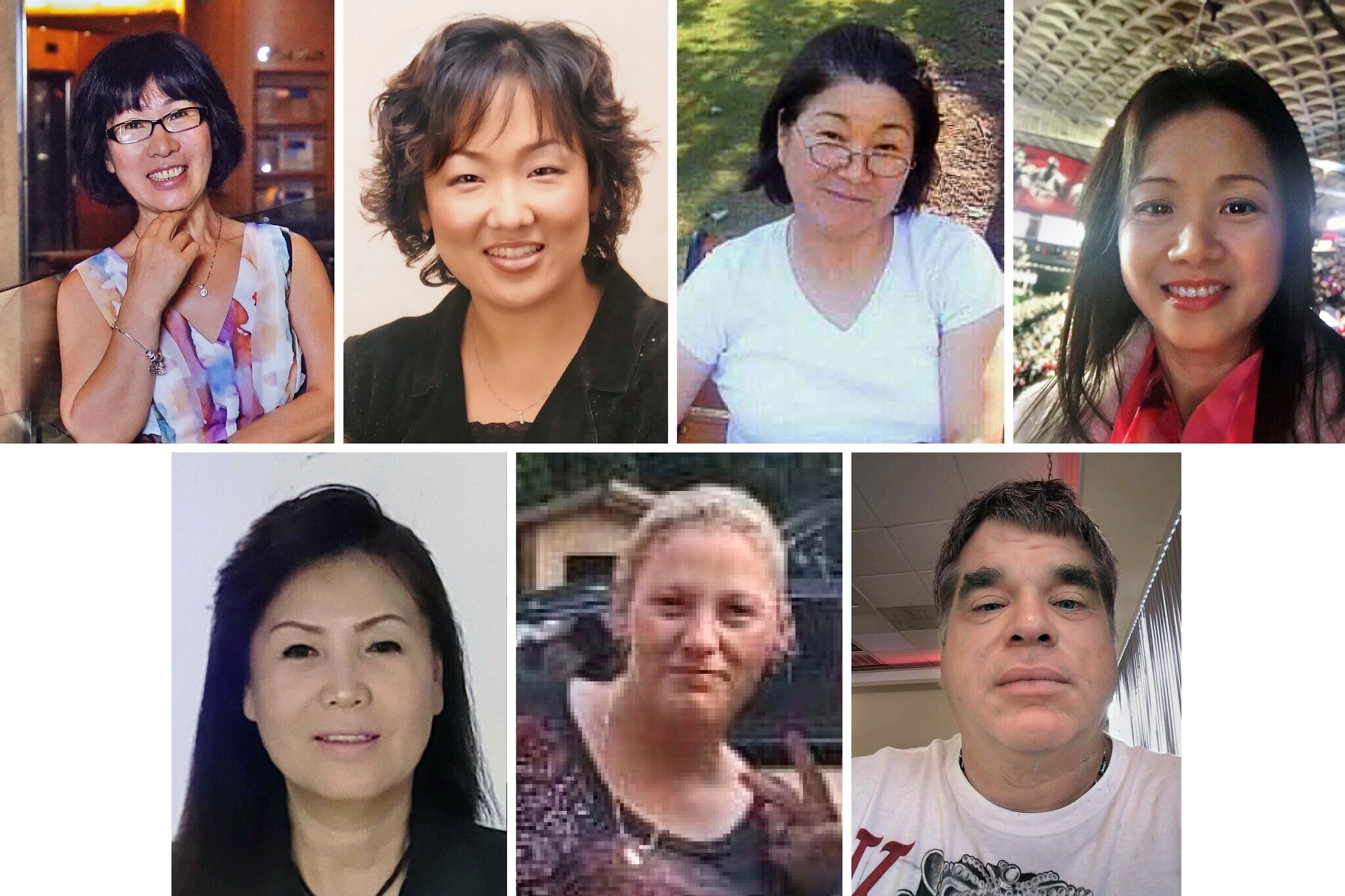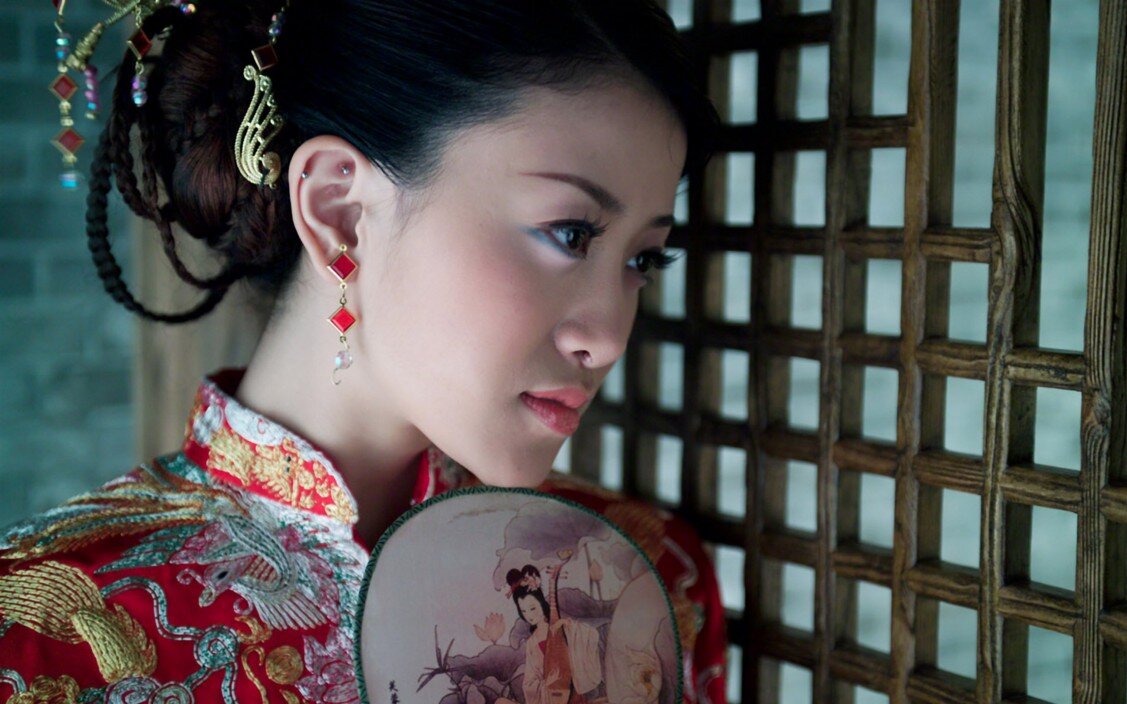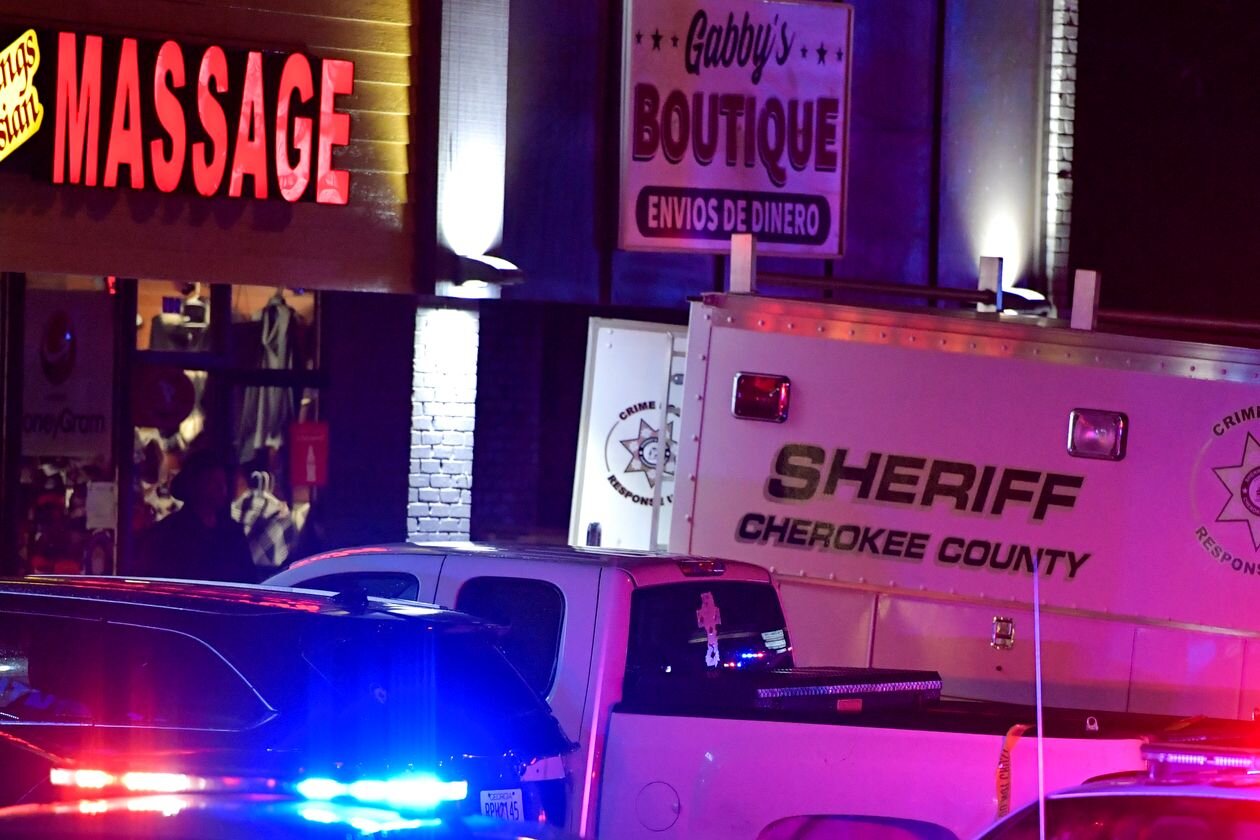Why I Don’t Care If It Was a “Bad Day”
Top row: Yong Ae Yue, Hyun Jung Grant, Suncha Kim and Xiaojie Tan. Bottom row: Soon Chung Park, Delaina Ashley Yaun and Paul Andre Michels.
Photo Credit: nytimes.com
It’s been 14 days. 14 days since shots rang out in those spas in Atlanta and Acworth, Georgia, ricocheting off walls and bodies. 14 days since the upward trend in anti-Asian hate crime occurrences reached a new, horror-inducing peak. 14 days since 8 people, 6 of them Asian women employed at the spas, lost their lives and the lives of their loved ones were forever changed, left behind with a gaping void, a loss. It’s a loss for the world at large as well, but this loss wrenches at the heartstrings in a slightly different way for the Asian community, for Asian women in particular. This makes us feel like the target that’s been on the backs of East Asians, at least ever since our former president made racist remarks about China and COVID-19, has now expanded, becoming easier for people to aim at them. Many Asians are now realizing that the victims of these shootings and previous hate crimes could have easily been their grandparents, parents, siblings, and friends. It could’ve easily been themselves.
Now, if you aren’t Asian yourself, imagine how it feels to be Asian and hear that the shooter claimed his murders weren’t racially motivated, that he killed these people because of his “sex addiction,” wanting to eliminate sources of “temptation” for himself. Imagine how it feels to hear that an officer on the case said that the shooter had simply been “having a bad day.” Imagine how it feels to be dismissed in this way, especially when these shootings were racially motivated hate crimes.
Photo Credit: Pop Culture AAS 118 on medium.com
The facts tell us that the shooter blamed his “sex addiction” for his irreprehensible actions and then proceeded to murder six Asian women, playing into the racist fetishization of Asian women. Asian women have been fetishized in America for as long as history can remember, this fetishization being coined “yellow fever.” There’s the Page Law of 1875 that targeted Asian women, blocking them from entering the USA because of the racist belief that all Asian women were prostitutes. There’s the Lotus Blossom (also known as China Doll or Geisha Girl) stereotype, intending to paint Asian women as submissive, obedient, hypersexualized objects that exist solely for white men’s pleasure. In 2019, “Japanese” was one of the two most searched terms on PornHub. None of this is a compliment because fetishization is not attraction or even “having preferences.” Rather, fetishization is the sexualization of what’s not inherently sexual, a way to degrade something or someone and make it so that something or someone is viewed as only having a sexual purpose. Thus, the fetishization of Asian women rips their humanity from these women’s bodies, degrading them into sex objects and nothing more. By claiming that his murders were the result of needing to get rid of his “sexual temptations,” the shooter didn’t hold back on presenting his racism and hatred for the world to see. Rather, he fetishized and degraded those Asian women to the point where he could no longer allow them to live.
Photo Credit: Associated Press
The facts also tell us that the shooter targeted Asian-owned spas, further pointing to anti-Asian racism as a critical factor in these shootings. One of the spas was called “Young’s Asian Massage Parlor,” eliminating any doubt about whether the shooter was aware that his targeted locations were Asian-owned businesses. Additionally, he likely knew that the other two spas he attacked (Gold Spa and Aromatherapy Spa) were also Asian-owned or at least had many Asian employees since he was a past customer. A racial motivation should ring even more warning bells considering he only shot and killed Asian women at Gold Spa and Aromatherapy Spa.
I’m angry.
I’m angry that law enforcement still didn’t believe this was a hate crime even after 6 Asian women were killed, the shooter associated sexual “temptation” with Asian women (by fetishizing them), and the shooter targeted Asian-owned spas. I’m angry that Captain Jay Baker, the officer on the case, dared to call this a “bad day” for the shooter like it wasn’t a worse day for the victims and their loved ones. It’s almost as if he was saying that having a “bad day” was a defense or an acceptable explanation for murder. It makes me feel like Asian women are dehumanized, becoming the targets at a gun range, a way for white men to let off some steam on their “bad days.” I’m angry that there’s enough corruption in law enforcement that this hate crime was protected, that no one set the record straight about the evidence of Asian fetishization and anti-Asian racism present in this shooting.
I’m angry that I was surprised when I saw people on Instagram post about anti-Asian racism and about these shootings. It felt a little odd seeing awareness spread about this rise in anti-Asian sentiments and violence. I felt angry that this meant that the Asian community (or at least I myself) got used to not being heard when it comes to racism against us. We got used to being pushed to the shadows.
Of course, I’m glad that the “Stop Asian Hate” movement is gaining support on social media. It’s about time.
However, it makes me sad to know that it took 8 people dying for people to start paying attention, especially when we consider that it’s been right in front of our eyes all along. There were 3,800 reported anti-Asian racist encounters in 2020. Anti-Asian racism didn’t start with the Georgia spa shootings. It didn’t even start with Trump or the pandemic. It started when Chinese people first immigrated to the USA back in the 1850s after the Opium Wars, waged by European colonial powers, displaced and disrupted China. For example, in response to this influx of immigrants from China, 20 Chinese Americans in Los Angeles were murdered in 1871.
Unfortunately, it’s not surprising that it took this long for anti-Asian racism to finally be acknowledged, let alone condemned. This is what concepts like the model minority myth can do: make people believe that Asian Americans can’t possibly experience racism. However, we are not your model minority. We are forced to push against a bamboo ceiling since in 2005, 30-31% of Asian Americans and Pacific Islanders, the most of any ethnic or racial group, reported employment discrimination. In 2006, 40% of Hmong, 38% of Laotian, and 35% of Cambodian people in America dropped out of high school before graduating and earning a diploma. As of 2008, 12.6% of Asian Americans lived below poverty lines. Then, in 2014, 26.6% of Asian Americans lived in poverty in New York City, which increased from the year before and was an increase from 2008. More recently, in 2017, Asian Americans had the highest poverty rate in New York City with Asian American elders, refugees, and recent immigrants being the most financially vulnerable. By highlighting only success stories, the model minority myth steals focus from where it should be: figuring out ways to support disadvantaged members of the Asian American community, those who are included in these statistics.
These statistics aren’t just numbers. They’re people, real, flesh-and-bone, breathing people. They deserve to be seen.
To all non-Asian allies: keep listening, keep caring. Don’t dismiss our experiences. Hold others accountable for racist remarks and actions. Hold yourself accountable for speaking out against anti-Asian racism and for uplifting Asian voices. To all Asian Americans and Pacific Islanders: stay angry, stay strong, and stay awake. Don’t let people stop talking about anti-Asian racism. Speak up so loudly that the March 16th shootings never happen again. Don’t let any of us be pushed into the shadows again.



